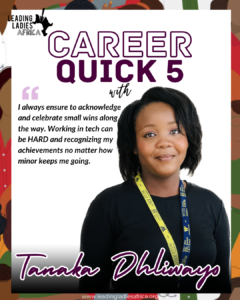
So many of us dream of leaving the 9–5 behind and becoming self-employed. Maybe you want to become an entrepreneur and have an amazing idea for a tech startup or a creative line of products that you’re just itching to share with the world — but you just can’t find the time or money to actually do anything about it.
There are bills to pay and the need to keep a roof over your head, so how can you actually make the jump from dreamer to a doer?
With time, attention and a little planning, you can take the necessary steps towards being a full-time business owner — as I did.
This transition didn’t happen overnight and there is no magic secret to success — just hard work and dogged commitment to living life on my terms, instead of someone else’s.
Setting Up A Side Hustle
When I first started consulting I had no intention of it turning into a full-time job. The idea of owning my own business was scary and it didn’t really feel like something I’d want to do— I was just looking for a way to make some extra money to help pay for childcare costs which were (and still are) painfully high.
My first contract was with a non-profit organization and I was supporting internal research and program evaluation. I was paid $15/hour and contracted to work 10 hours a week.
As I established myself and built my reputation for producing quality work, I was offered more hours and an increase to my hourly pay rate, both of which I gladly accepted.
Eventually, this turned into a contract for research, evaluation and project management that would allow me to turn my ideas into a collaborative initiative with a university in Massachusetts (I live on the other side of the continent and in Canada!).
So far we’ve received close to $300k for three separate projects from a major U.S. funder and we don’t intend to stop there.
At the same time, all of this was unfolding, I was also being tapped for additional consulting work related to my field of expertise. My side hustle was starting to take more and more time away from my evenings, weekends and whatever extra bit of time I could find in my jam-packed days, where I was still working full-time.
It was at this point that I knew I either had to make the jump to full-time consulting or reduce the number of projects and commitments I had on the go. With four years of consulting under my belt, a solid number of clients and an established reputation the pieces were in place to transition.
Before thinking that you can start your own business keep in mind that it takes time to build trust and establish a great relationship with your clients. Just because you’re a good writer at your current job doesn’t mean that this will instantly translate into clients banging down your door the minute you’re open for business.
Setting up a side hustle while working might sound overwhelming, but it can give you the foundation you need to make money and pay your bills when you first start.
It’s a lot easier to get going with half a tank of gas than one that’s nearly empty. You’ll need all of it to make it past the frustrations and challenges that come along with business ownership.
Make it your goal to be one of the 10% of new businesses that succeed in their first year, instead of the 90% that fail because of a lack of planning, resources or a proven business model.
Deciding What You Have To Offer
Long before I made the transition to full-time self-employment I was a committed corporate career woman. I had built a strong reputation for my writing and communication skills, strategic planning and systems thinking within health care, research and the non-profit sector.
Having spent a decade working these fields I had learned a lot and was given opportunities with more responsibility and chances to try new things — learning the ropes of leadership and people management, stakeholder and government relations along with crisis management.
At the same time, I was also building my reputation through my side hustle doing research and evaluation work, while also learning the ropes of social media management, marketing and consumer engagement, and grant writing.
Looking back on it now I can see that it was all kismet and meant to get me to the place where I am now — a full-time business owner with a clear purpose and vision of what I want to build.
Key to this success was sitting down and examining what I had to offer clients in terms of skills and expertise. I then had to look at how I could use all this knowledge to solve the immediate problems I knew were rampant in the industry and leverage the existing relationships I had with clients.
One of the biggest issues always facing my clients is securing funding for research, program operations and other initiatives. Writing successful grant and funding applications is absolutely essential to keeping the lights on, and many of these are massive documents — 50, 60, even 100 pages in length.
By taking my skills in project management, strategic planning and writing, and positioning myself as a grant writing consultant that can take care of the entire process, clients breathe a sigh of relief and they can focus on the other parts of their business.
Think about your skills and experience. What do you know and how can you transform it into something of value for potential clients?
If you’ve been in your industry for a while and understand where the critical pain points are, you’re even more ahead of the game. It’s in solving these most pressing problems faced by clients where you’ll meet with the most success.
Creating A Plan
You might think that all this sounds great and wonderful but does nothing to help youget from away from the rat race. While I had some luck and definitely put in a lot of hours to get me to the place where I am now, experience tells me that I needed a plan.
Doing my work piece meal and as opportunities came up was interesting, but it wasn’t a sustainable approach to creating a long term success. It left me feeling like I constantly had one foot in my day job and another in my side hustle, unable to really focus on either.
If you’re serious about making the jump to entrepreneurial life, take time to sit down and think through all of the implications it may have on your life and work. Factor in your current lifestyle, commitments and obligations. There will be things that you’ll have to put down in order to make your business work.
Making the jump to full-time self employment was actually more of a push for me because I ended up being laid off. Rather than looking for a new job, I knew that it was finally time to go for it.
For the last six months I had been strategizing, planning and dreaming about what my business could look like, but was afraid of the uncertainty that comes along with being self-employed. If anything else this experience has taught me that nothing is certain when it comes to holding down a job, so you need to have an exit strategy.
While planning for your new business consider how and where you’ll find new clients, take time to figure out your operating expenses, and think about marketing and branding. All of these will play a critical role in your chances of success.
It’s entirely possible to leave your day job and pursue your entrepreneurial dream with the right amount of time, attention and planning. Consider first setting up a side hustle to start and see how profitable it is. Manage your reputation well and build a base of clients before you fully set off on your own.
Part of your planning process needs to involve a realistic evaluation of what skills and knowledge you have to offer. Understanding the pain points and specific needs of your ideal client will allow you to develop amazing solutions that will differentiate you from your competitors.
Finally, when you do think about what an entrepreneurial startup could look like, remember to consider all the cascading effects to other parts of your life. Have a plan before you make the jump and be committed to your long term vision — these will be what help you keep going when you hit a bump (or pothole) in the road.
This post was written by Shannon Hennig
Cover photo by Dr Kiarra King



